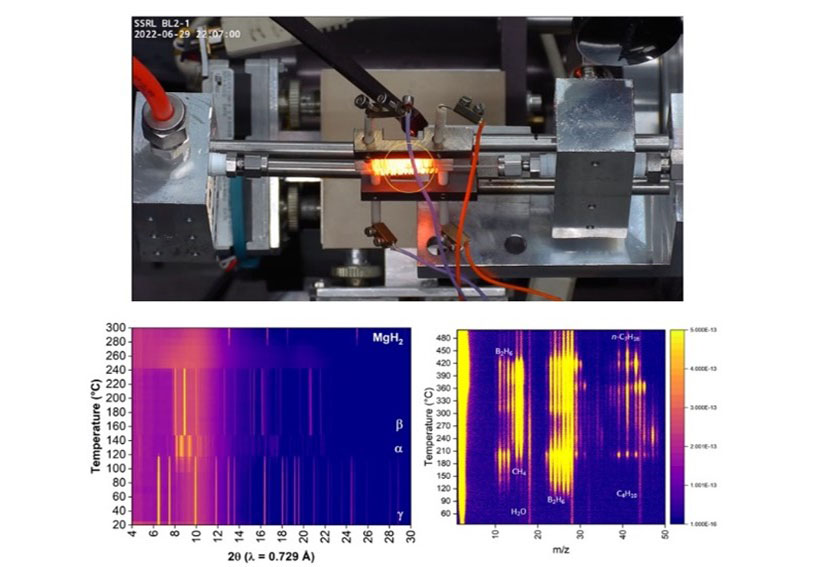In Situ X-Ray Scattering Measurements With Variable Sample Temperature, Gas Pressure, and Composition
Category
Characterization Tools
Laboratory
SLAC National Accelerator Laboratory
Description
We have developed a capillary-based in situ/operando sample cell for X-ray scattering techniques, including small-angle X-ray scattering with simultaneous wide-angle X-ray scattering (SAXS/WAXS) and high-resolution X-ray diffraction. The sample cell is interfaced with a residual gas analyzer for characterizing evolution of vapor phase reaction products (e.g., during dehydrogenation). Most often these capabilities are used to measure agglomeration of nano-confined hydrides, structural and chemical evolution during dehydrogenation and rehydrogenation (or equivalently dehydriding/rehydriding) reactions, and high-throughput examinations of lattice parameters as a function of hydrogen pressure and sample temperature (e.g., for coefficient of thermal expansion for porous framework materials). In situ measurements are typically conducted to address material processing, performance, and durability.
Max sample temperature: 1500 K (1300 K sustained operation)
Minimum sample temperature: 110 K (measured by internal thermocouple)
Maximum gas pressure: 200 bar (expected 650 bar by summer 2023)
Minimum gas pressure: 10-7 mbar (10-4 mbar pressure resolution)
Figure

Cu-decorated COF-300 before and after exposure to 5 Bar hydrogen.
